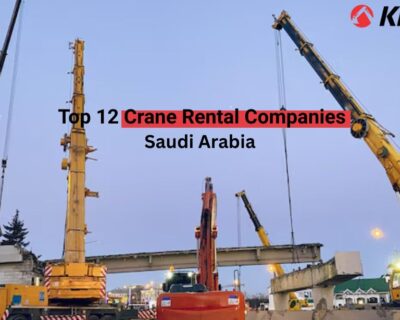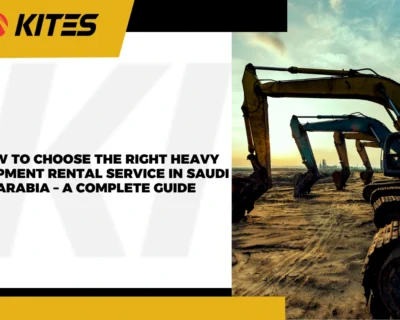Maximizing Profitability in the Equipment Rental Business
Equipment rental market is essential in several industries, including manufacturing, infrastructure development, and construction. For owners of equipment rental businesses, profitability is essential to the survival and expansion of their businesses. This article will examine several tactics to maximize heavy equipment rental industry profitability. The primary points of emphasis will be maximizing equipment utilization, putting preventative maintenance routines into place, and cutting down on repair costs and downtime.
Understanding the Equipment Rental Market
Market trends and growth opportunities
A thorough grasp of the equipment leasing industry is necessary to optimize profits. Keep abreast of market developments and growth prospects to pinpoint prospective regions for growth.
Identifying target customer segments
To match your rental options with market wants, research elements, including local building projects, plans for infrastructure growth, and industrial demands. Another important factor is determining the target client categories. Identify the organizations and industries—construction, landscaping, and event management companies—commonly requiring heavy equipment.
Competitive analysis and positioning
Create marketing and sales tactics specifically for these target clients to engage and attract them. Perform a competitive study to learn about your rivals’ products, services, and clientele. You can determine your market positioning and distinctive value proposition using this investigation. Make your company stand out by focusing on rental terms, customer service, high-quality equipment, and other value-added services.
Optimizing Equipment Utilization
In the rental sector, maximizing equipment utilization is essential to profitability. The following are some methods to maximize the use of equipment:
Tracking equipment availability and usage
Place a reliable tracking system to monitor the availability and usage of your rental equipment. Doing this lets you spot underutilized assets and decide on the right size fleet, rental price, and asset distribution. You may receive real-time insights into the availability and performance of your equipment and optimize this process by using equipment tracking systems or rental management software.
Implementing preventive maintenance routines
Regularly maintaining your Heavy equipment rental is crucial to its longevity and best use. Create a preventative maintenance schedule covering regular service, repairs, and inspections. A proactive maintenance schedule lowers the chance of expensive repairs or replacements, increases equipment longevity, and helps minimize malfunctions.
Reducing downtime and repair costs
Profitability can be greatly impacted by downtime. To reduce rental disruptions, promptly address equipment faults or malfunctions. Keep up a well-stocked maintenance facility or form alliances with dependable suppliers of repair services. Consider investing in consumables and replacement components to speed up maintenance procedures and lower equipment downtime. Additionally, teach your employees how to do routine equipment inspections during rental returns and teach them basic troubleshooting techniques. Encourage clients to notify you of any problems as soon as they arise so that you may resolve them quickly and limit any possible harm. To preserve the effectiveness and durability of your equipment, use preventative maintenance procedures. Take quick action to fix issues, minimize downtime, and look at ways to lower the cost of repairs. Using these techniques, fortify your position as a leader in the market and create lasting success in the equipment rental sector.
Marketing and Customer Acquisition
Establishing a solid online presence is essential for drawing clients in the equipment rental industry in the modern digital era. KITES Heavy Equipment Rental may improve its internet presence by implementing the below tactics:
Building a strong online presence
The kitesgcc acts as a base for creating an online presence. It needs to be intuitive to use, well-designed, and search engine optimized. The company’s services, equipment, and contact details should all be covered on the website. To establish credibility, it should also include case studies and client endorsements. KITES Heavy Equipment Rental uses social media sites like Instagram, LinkedIn, Facebook, and Twitter to grow its online presence further. The business may reach a larger audience and spark interest by often publishing interesting information about the sector and providing updates about equipment availability or exclusive deals.
Targeted marketing campaigns
KITES targeted marketing initiatives to draw in new clients. These initiatives include search engine marketing, email marketing, and internet advertising. Using demographics and targeted keywords, the business may connect with potential clients looking for equipment rentals in Saudi Arabia. In addition, engaging in trade events and exhibits or forming partnerships with magazines that cater to a certain sector may assist in building brand awareness and drawing in relevant leads.
Customer loyalty and retention strategies
KITESmust give these areas top priority. Strong client connections and first-rate customer service may result in recommendations and repeat business. The business might implement loyalty programs, rewarding or discounting regular consumers. Keeping in touch with clients regularly via newsletters, customized emails, or social media engagements can assist in keeping a solid relationship and guarantee top-of-mind awareness.
Streamlining Operations
Optimizing revenue and client delight requires efficient processes. The following actions will help KITES Heavy Equipment Rental to simplify its operations:
Efficient inventory management
An inventory control system will make tracking equipment availability, use, and maintenance plans easier. With the help of this technology, the business will be able to maximize fleet utilization, prevent overbooking, and guarantee prompt maintenance or repairs. KITES can make well-informed judgments on the purchase and retirement of equipment by comprehensively understanding equipment availability and demand.
Implementing digital rental management systems
Using digital rental management systems will make renting easier. These systems can manage contracts, process payments and invoices, and schedule equipment. By automating these procedures, KITES may decrease human mistakes, save time, and boost productivity.
Reducing administrative overhead
KITES may want to consider outsourcing non-core operations, such as payroll, accounting, and IT support. By contracting with specialized service providers, the business may reduce expenses, increase accuracy, and concentrate on its core strengths. Cloud storage solutions and digital documents may also save paperwork, improve accessibility, and strengthen data security.
Ensuring Equipment Safety and Compliance
In the equipment rental industry, ensuring equipment compliance and safety is crucial. KITES may give safety and compliance top priority by implementing the following programs:
Regular safety inspections and training
The likelihood of injuries can be reduced by regularly inspecting equipment for safety issues and giving operators and personnel thorough training. KITES must comply with industry safety standards and regulations, guaranteeing that all equipment is properly maintained and operational. The company will develop a safety culture by implementing a comprehensive safety program that includes regular training, risk identification, and incident reporting.
Complying with regulations and industry standards
KITES must keep abreast of all applicable rules and industry standards concerning equipment rental and use. This covers adherence to regional, governmental, and global environmental and safety standards. Following these guidelines will shield the business from legal risks while also guaranteeing the safety of its workers and clients
Liability management
A company needs the right insurance coverage for its operations and equipment to manage liability efficiently. This covers workers’ compensation insurance, equipment damage or loss coverage, and general liability insurance. It would be helpful to reduce potential risks and liabilities by checking insurance plans and cooperating with expert insurance providers regularly.
Financial Management and Cost Control
Financial management and cost control are essential for KITES Heavy Equipment Rental to be a successful equipment rental firm. By implementing these methods, the company enhances its total profitability and optimizes its financial performance. The following are some crucial factors for cost containment and financial management:
Budgeting and financial planning
KITES creates a thorough financial strategy and budget. This includes assessing costs, projecting income, and establishing financial objectives. KITES enhances its ability to manage resources, pinpoint expansion opportunities, and make well-informed decisions by creating a well-defined plan for its financial operations. By periodically updating and analyzing the budget, the business can monitor its financial performance and make the required corrections.
Monitoring expenses and optimizing costs
Good cost control depends on careful monitoring of spending. KITES is recommended to maintain frequent oversight of its operational expenditures, encompassing fuel usage, personnel compensation, overhead expenses, and equipment maintenance. The business may increase its bottom line by identifying areas where expenses can be minimized or optimized, for as by introducing energy-efficient practices or negotiating better supplier contracts. Maintaining the dependability of the tools and services should be matched with cost-cutting initiatives.
Leveraging tax incentives and deductions
Kites must make use of all Saudi Arabian tax breaks and benefits. This can be tax breaks for costs connected to the firm’s operation or incentives for investing in particular equipment. Hiring a competent tax advisor may assist in locating and seizing these possibilities, guaranteeing adherence to tax laws and reducing the tax burden on the business. KITES boosts its cash flow and strengthens its financial position by taking advantage of tax breaks and incentives.
Ending Note
KITES Heavy Equipment Rental’s performance depends on sound financial management and cost containment. By implementing spending tracking, planning, and tax incentive utilization, the business may improve profitability, support its growth goals, and optimize its financial performance. By upholding a solid financial base, KITES is better equipped to handle obstacles, seize chances, and compete in the equipment rental market.






